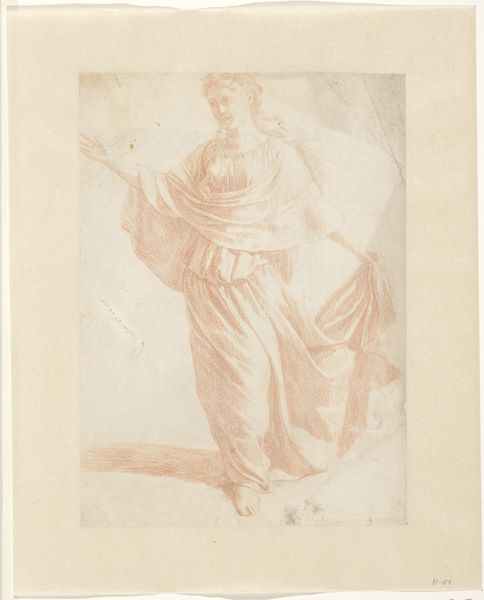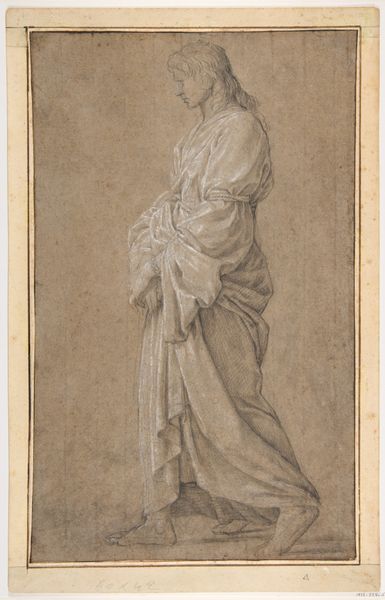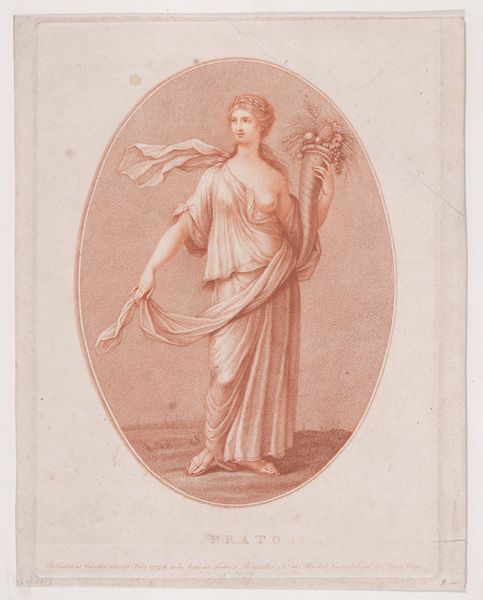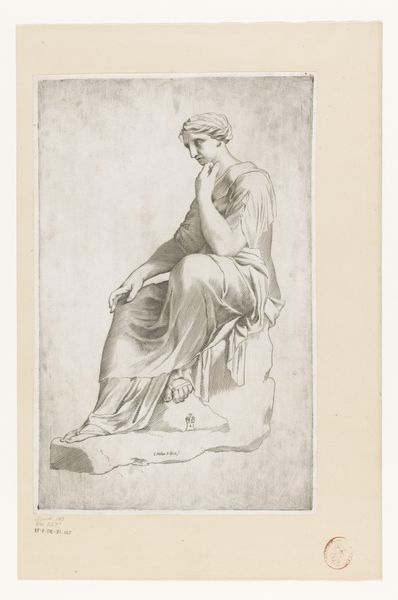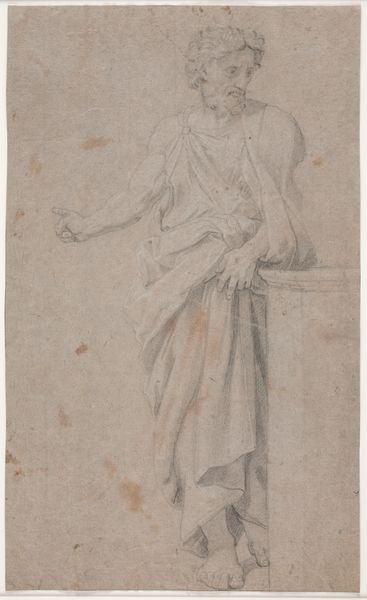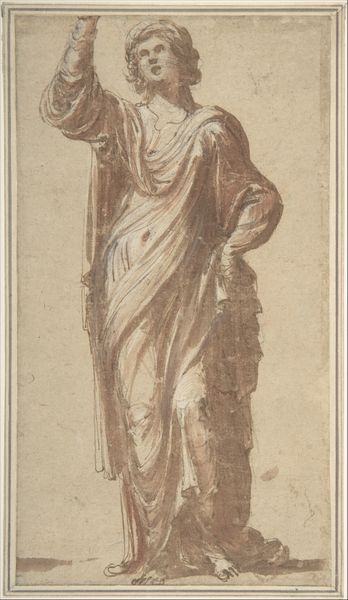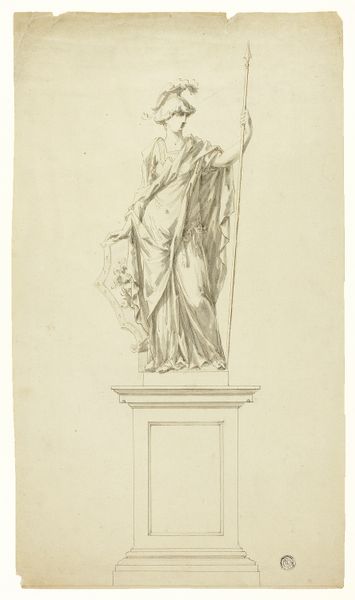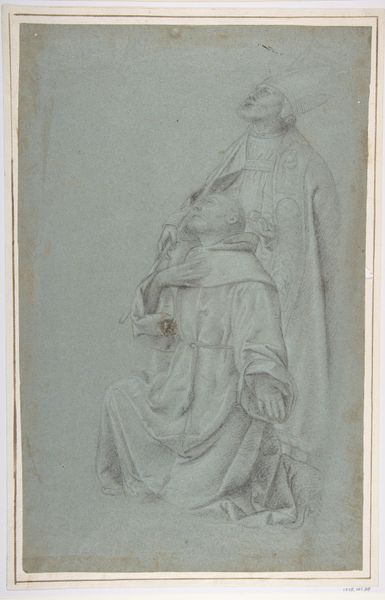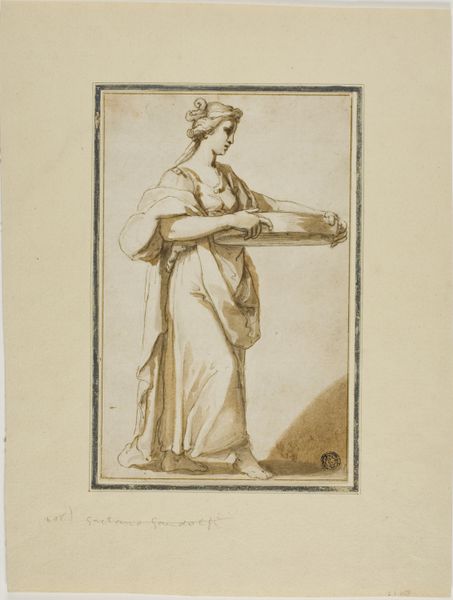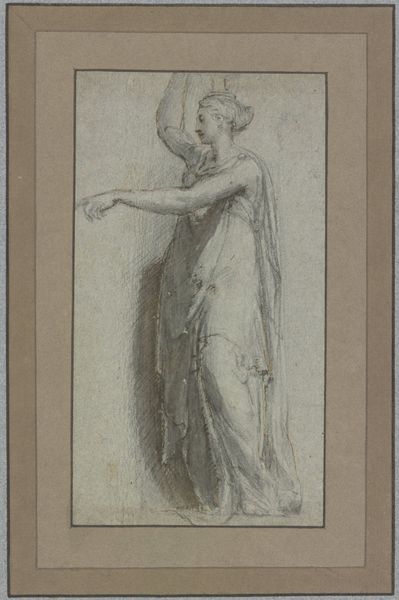
drawing, paper, pencil
#
portrait
#
drawing
#
pencil sketch
#
figuration
#
paper
#
11_renaissance
#
coloured pencil
#
pencil
#
italian-renaissance
Dimensions: height 419 mm, width 247 mm
Copyright: Rijks Museum: Open Domain
Curator: We're looking at "Saint Catherine as a Martyr," a drawing attributed to Michelangelo, dating sometime between 1485 and 1564. It's currently held in the collection of the Rijksmuseum. Editor: It’s immediately striking—the almost ethereal quality despite the stark medium of pencil on paper. Her downcast gaze and open hands convey a sense of resignation. Curator: Precisely. Note the use of line—hatching and cross-hatching delineate the figure, giving volume to her drapery. The delicate pencil work beautifully captures the soft textures of her garments and the subtle folds that describe her form. Michelangelo masterfully conveys her physical presence. Editor: I’m intrigued by the paper itself. What was its texture like, how was it prepared to receive the pencil marks? Considering its age, I wonder about the paper’s provenance and how that influenced Michelangelo's handling of the materials, because that definitely had an effect on the artwork as we view it today. Curator: It raises interesting questions about the value judgments we place on "high art." Here we have a drawing on paper, likely a study for something grander, yet the artistry and formal sophistication are undeniable. This very form displays a conscious choice, a move away from conventional art, which gives its own purpose. Editor: And considering the conditions in which Michelangelo produced art – the availability of materials, the constraints of his commissions – it adds another layer of meaning. These kinds of drawings provided immediate means of transferring thought to material, which shows his practice, which would affect the finished work later. Curator: A potent reminder that great art isn't solely defined by scale or medium, but by the power of artistic vision, technical virtuosity and emotional resonance. The restrained tones give the drawing power beyond words. Editor: Indeed. It encourages a more holistic understanding of Michelangelo's practice, bridging the conceptual with the tactile realities of artmaking, which allows for an appreciation for how those aspects interplay in his later works.
Comments
No comments
Be the first to comment and join the conversation on the ultimate creative platform.
